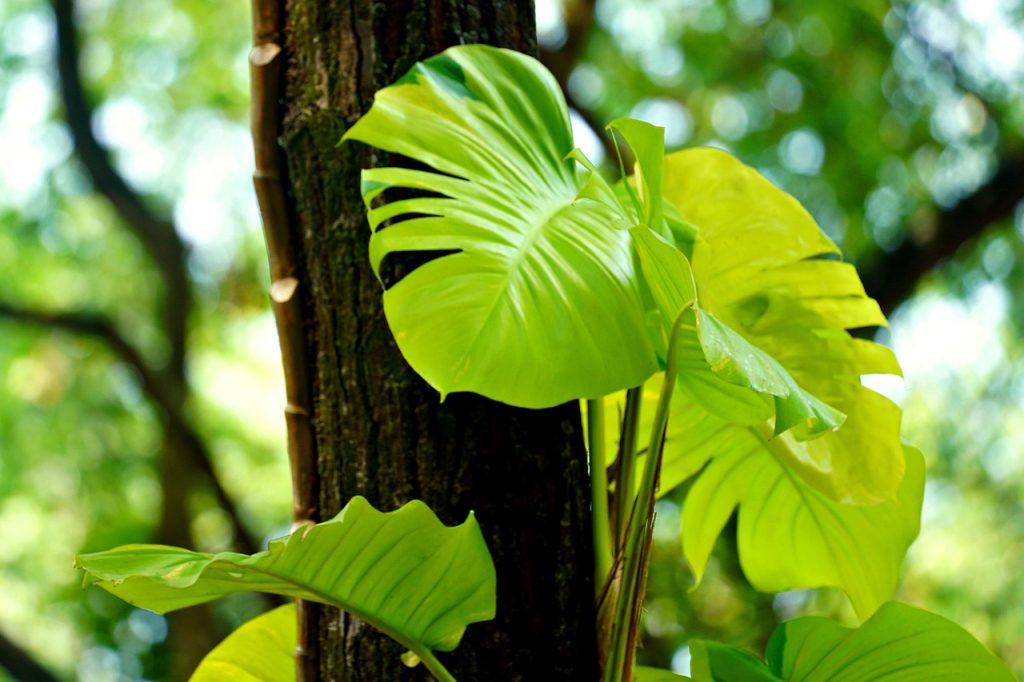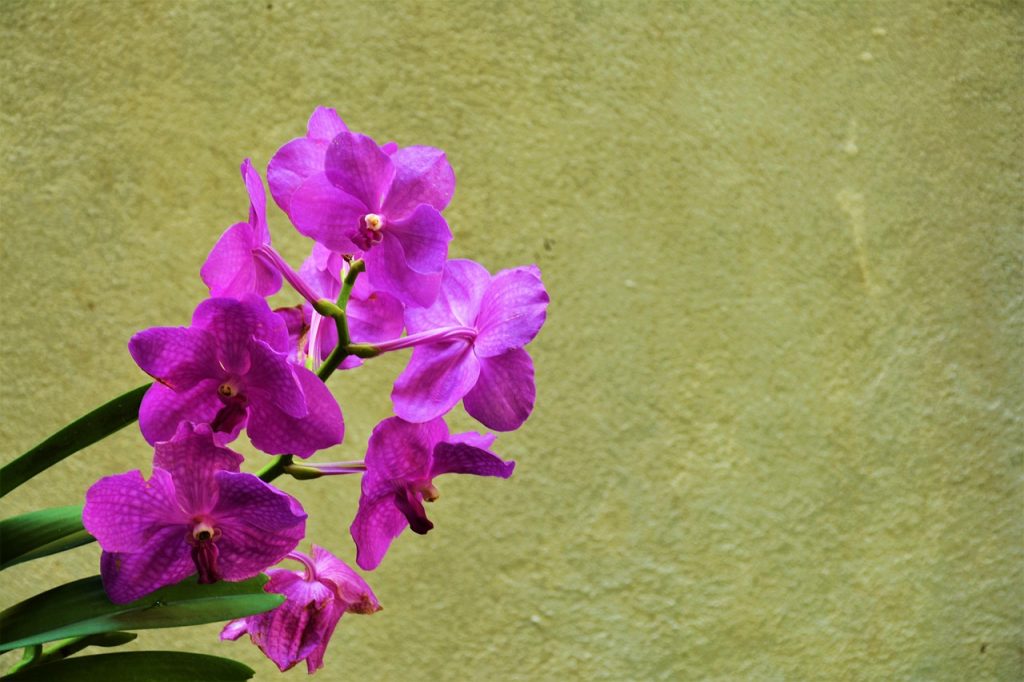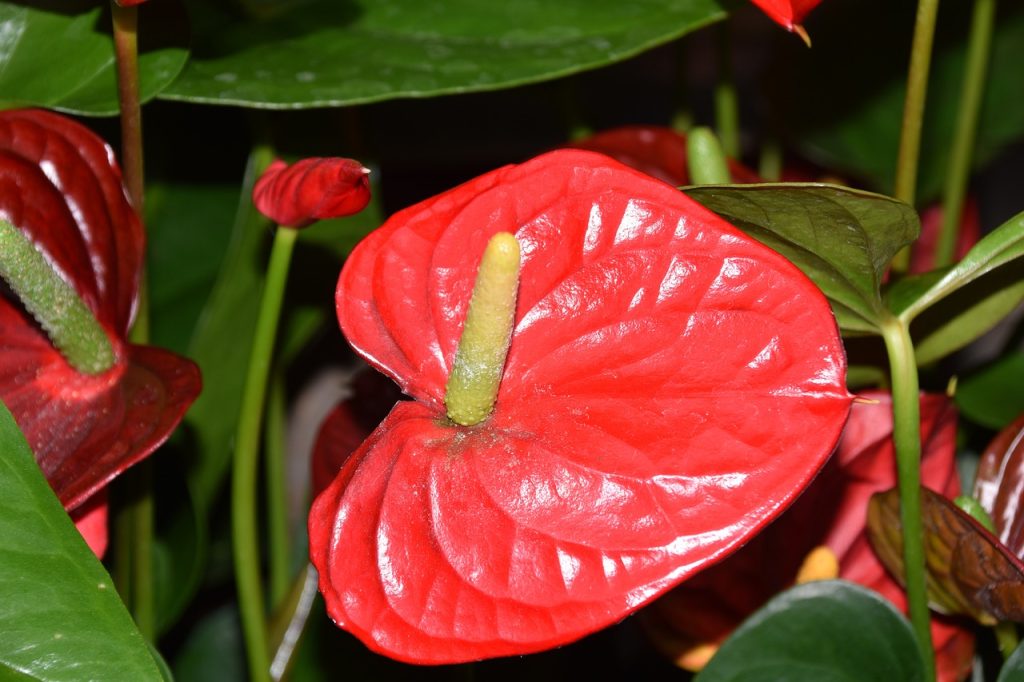Anthuriums, with their striking heart-shaped blooms and glossy foliage, are a favorite among plant enthusiasts for both indoor and outdoor decoration. Originating from the tropical regions of the Americas, these plants are celebrated for their vibrant colors and unique leaf structures. However, maintaining their beauty requires understanding their specific needs and conditions. This guide delves into the fascinating world of anthuriums, covering everything from their origins to practical care tips, ensuring your anthuriums thrive and remain a captivating focal point in any space.

Background and Origin of Anthuriums
Anthuriums belong to the Araceae family and are native to the tropical rainforests of Central and South America. The genus comprises over 1,000 species, each displaying a remarkable variety of colors and shapes. Known commonly as “flamingo flowers” or “laceleaf,” these plants were first scientifically described in the 19th century. The name Anthurium is derived from Greek, meaning “tail flower,” aptly describing its unique spadix and spathe structure.
Recognizing
Though Anthurium andraeanum is the most popular species, known for its red, heart-shaped spathes, there are numerous varieties worth exploring:
- Anthurium scherzerianum: Notable for its twisted spadix and more compact size, this variety often showcases orange or white spathes.
- Anthurium crystallinum: Esteemed for its large, velvety leaves with striking white venation, making it an excellent foliage plant.
- Anthurium clarinervium: Similar to crystallinum but with a more pronounced heart shape and thicker leaves.
Ideal Growing Conditions
Light Requirements
Anthuriums thrive in bright, indirect light. Direct sunlight can scorch their leaves, while insufficient light may lead to lackluster blooms. A north or east-facing window is ideal, or you can employ sheer curtains to diffuse the sunlight.
Soil and Water Needs
A well-draining potting mix is crucial for anthuriums, as they dislike being waterlogged. A mixture of orchid bark, perlite, and peat moss provides the aeration these plants need. Water them when the top inch of soil feels dry, taking care to avoid overwatering.
Temperature and Humidity
As tropical plants, anthuriums prefer temperatures between 65°F to 85°F (18°C to 29°C) and high humidity levels. If your home is dry, consider using a humidifier or placing the pot on a tray of pebbles and water to increase the ambient moisture.

Planting and Propagation Techniques
Planting Anthuriums
When planting anthuriums, choose a pot with adequate drainage holes to prevent root rot. Repot every two to three years or when roots start to outgrow their current container. Handle the roots gently to avoid damage.
Propagation Methods
Anthuriums can be propagated through division or from cuttings:
- Division: During repotting, gently separate offsets from the parent plant, ensuring each division has roots and at least one leaf.
- Cuttings: Take stem cuttings with at least two nodes, and root them in a mixture of perlite and peat moss, maintaining high humidity until new growth appears.
Seasonal Care for Anthuriums
While anthuriums are relatively hardy, seasonal changes require some adjustments in care:
Spring and Summer
During the growing season, fertilize your anthuriums monthly with a balanced liquid fertilizer, diluted to half strength. Ensure consistent watering and humidity to support vigorous growth and blooming.
Fall and Winter
In cooler months, reduce watering frequency as plant growth slows. Maintain humidity levels and avoid placing plants near cold drafts or heating vents, which can stress the foliage.
Common Problems and Solutions
Pest Issues
Mealybugs, aphids, and spider mites are common pests that can afflict anthuriums. Regularly inspect your plants and treat infestations with neem oil or insecticidal soap.
Leaf Yellowing
Yellowing leaves may indicate overwatering or nutrient deficiencies. Ensure proper drainage and adjust fertilizer use as needed.
Root Rot
Overwatering or poorly draining soil can lead to root rot. If suspected, remove the plant from its pot, trim away affected roots, and repot in fresh, well-draining soil.

Real-Life Uses of Anthuriums
Anthuriums are not only beautiful but also versatile in their uses. They make excellent long-lasting cut flowers, often used in floral arrangements due to their vibrant colors and unique shapes. Additionally, their air-purifying qualities make them beneficial houseplants, contributing to a healthier indoor environment.
FAQs About Anthuriums
How often should I water my anthurium?
Water your anthurium when the top inch of soil feels dry. This typically means watering every one to two weeks, depending on environmental conditions.
Why are my anthurium’s leaves turning brown?
Brown leaves can result from low humidity, excessive sunlight, or over-fertilization. Adjust environmental conditions accordingly and ensure proper care practices.
Can I grow anthuriums outdoors?
Anthuriums can be grown outdoors in warm, humid climates. Choose a shaded area to protect them from direct sunlight and ensure the soil drains well.
What is the best way to clean anthurium leaves?
To maintain their glossy appearance, gently wipe anthurium leaves with a damp cloth to remove dust, being careful not to damage the foliage.